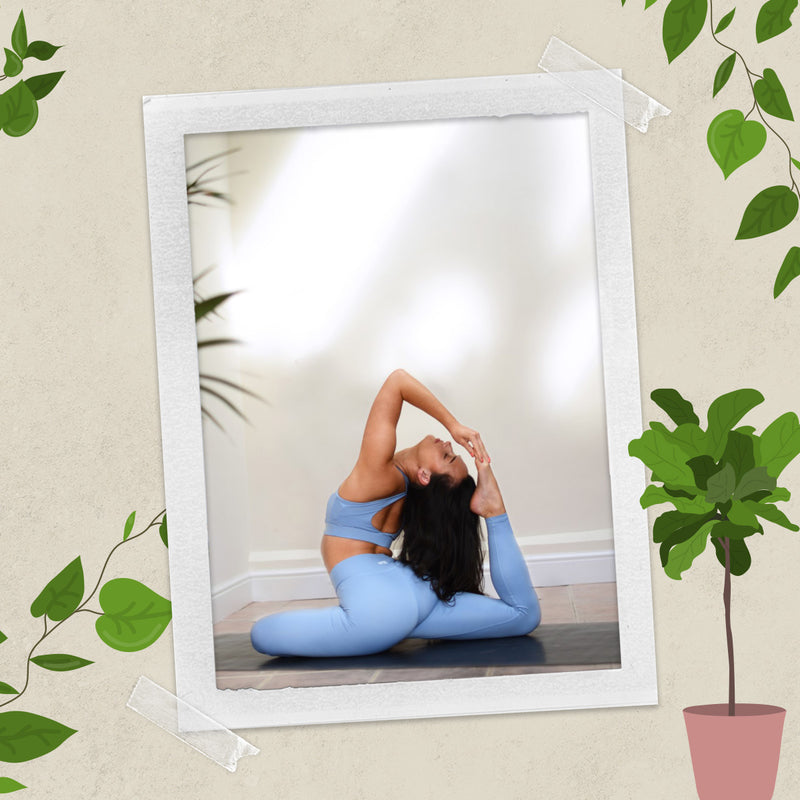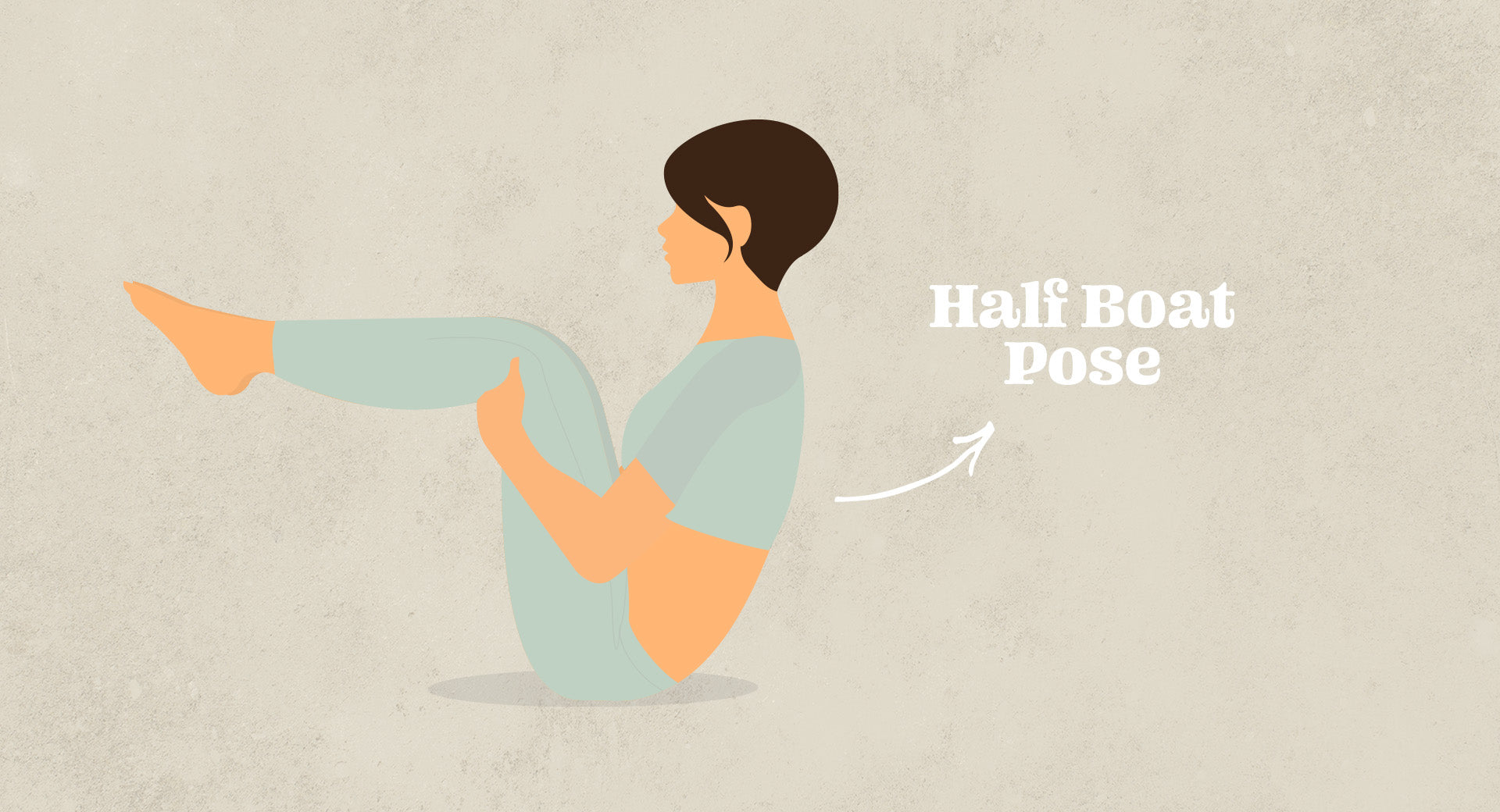
Yoga 101 With @kwcyoga
Yoga mats at the ready because it’s time to channel your inner zen and discover the beauty of yoga with our all new Flow Collection.
Whether you’re looking to try yoga for the very first time or are already a fully-fledged yogini, our Flow Collection is everything you need to elevate your practice. Designed with effortless ease of movement, feel-good support and a beautiful second skin feel, maximise both your comfort and your confidence.
The best thing about yoga is that you don’t have to be an expert to reap the benefits. No matter your age or agility, yoga has the power to calm the mind and strengthen the body. So, as part of Stress Awareness Month, we caught up with yoga instructor, Katrina to shine a light on all things yoga, including how it can relieve anxiety and stress.

WHAT IS YOGA?
Yoga is more than just a physical workout, yoga is a holistic practice that helps strengthen the mind, body and soul. There are many benefits to practising yoga and with the launch of our Flow Collection, there’s never been a better time to dive into the world of zen.
HEY KATRINA, IT’S SO LOVELY TO MEET YOU! CAN YOU TELL US SOME OF THE PHYSICAL BENEFITS OF YOGA?
There are so many physical benefits to yoga! A consistent practice will strengthen muscles, ligaments, tendons and even bones, all whilst increasing mobility, flexibility and improving balance.
Yoga also increases lung capacity, reduces inflammation, improves digestion and that’s not all… When you practise breathing slowly and mindfully, you are letting your body know you are in a safe place. When your body and brain know you’re in a safe place all of the energy it would usually use for your stress response will be redirected and your body can begin to heal.

HOW DOES YOGA BENEFIT YOUR MENTAL HEALTH?
When you practise yoga, your brain cells develop new connections and create new neural pathways. Changes occur in your brain’s chemistry resulting in improved cognitive skills, including learning, memory, attention and awareness.
As well as keeping your brain young and your mind healthy, yoga has also been shown to reduce the release of stress hormones by activating our parasympathetic nervous system and alleviating emotions, such as depression, anxiety and anger. This in turn improves wellbeing and creates mental clarity.
HOW OFTEN SHOULD YOU PRACTISE YOGA AND WHY?
The most important thing to remember is that everyone and everybody is different, and we will all progress in our own time.
The key is practising regularly and consistently. Like everything, the more you practise, the quicker you’ll progress, but that doesn’t mean you always have to do 60 to 90 minute sessions. You’ll gain a lot more from practising for short periods every day or every other day than you will doing one long session every now and then.
Make sure you set yourself sustainable goals. Think about your weekly routine… Is it realistic for you to practise for an hour 5 times per week? If yes, great! If not, pick a duration that you know you can stick to and stick to it!
It’s also so important that you don’t rush things. Be patient with your practice. Don’t be so set on your end goals that you push yourself further than what your body is ready for. Any excessive amount of physical activity can lead to injury and yoga is no exception. You know your body best, listen to it.
 WHAT ARE FOUR CORE YOGA POSES AND HOW DO YOU DO THEM?
WHAT ARE FOUR CORE YOGA POSES AND HOW DO YOU DO THEM?
My favourite core exercises in yoga are:
1. Boat Pose: Start by sitting down with your legs stretched out in front and reach your fingertips forwards. Squeeze your legs together, slowly tilt back and start to peel your toes off the mat, flexing them towards your shin. Then, float your legs off the floor and bend your knees, so your shins are parallel to the mat. Keep your shoulders back and broaden the chest. Hold this position or straighten your legs, keeping them squeezed the entire time.

 3. Hovering Table Top Pose: Move into a table top position (shoulders over wrists, hips over knees). Curl your toes under and tuck your tailbone slightly to engage the core. Spread the fingers and press through the palms and toes. As you inhale, lift your knees a few inches off the mat. You can hold this position or challenge yourself by extending the opposite arm and leg.
3. Hovering Table Top Pose: Move into a table top position (shoulders over wrists, hips over knees). Curl your toes under and tuck your tailbone slightly to engage the core. Spread the fingers and press through the palms and toes. As you inhale, lift your knees a few inches off the mat. You can hold this position or challenge yourself by extending the opposite arm and leg.
 4. High Plank Pose: This one is a lot harder than it looks! Start in a table top position then push up to a plank with your legs straight. Try to find more core engagement than your regular gym plank by pressing through the palms and spreading the shoulder blades. Lift your belly towards the ceiling and tuck your tailbone under (think cat spine). Stay here and focus on your breath.
4. High Plank Pose: This one is a lot harder than it looks! Start in a table top position then push up to a plank with your legs straight. Try to find more core engagement than your regular gym plank by pressing through the palms and spreading the shoulder blades. Lift your belly towards the ceiling and tuck your tailbone under (think cat spine). Stay here and focus on your breath.

HOW CAN YOGA IMPROVE YOUR LIFESTYLE?
When people think of yoga, they think of these incredible poses that you see all over Instagram, but in reality, the physical practice (Asana) is only a tiny part of yoga. Yes, the physical benefits of yoga are amazing, but there’s a whole other world to yoga.
The famous Indian Sage, Patanjali, wrote his definition of yoga in the Yoga Sutras as having eight limbs. The Eight Limbs of yoga were outlined as directives on how to live a meaningful life, Asana (physical practice) being the third. The first two are:
1. Yama, which refers to moral principles, such as truth and non violence.2. Niyama, meaning self observation, personal conduct and internal ethics, such as contentment.
Everything listed above can help beyond the physical practice. It helps to create a life where you are physically and mentally healthier, more mobile, more patient, more compassionate, more content and more self-aware.

WHERE CAN I DO YOGA AND WHAT EQUIPMENT DO I NEED?
You can do yoga wherever, whenever. If you can’t make it to a studio, find some floor space at home or outside.
You’ll probably need a mat, something slightly thinner and slip-free for a Vinyasa class and something a little more padded for a restorative class. If you want, you can modify any pose with straps, blocks, bolsters or even a chair.
HOW DOES YOGA DIFFER FROM MEDITATION?
Yoga doesn’t differ from meditation, yoga is meditation. I think there is a lot of confusion and misconceptions about meditation - you don’t need to be sat in a temple in the mountains and you don’t need to burn incense or sit with gurus to meditate. Meditation can be as simple as:
- training your mind to focus;
- becoming aware of and redirecting your thoughts;
- being completely present;
- focusing all of your attention on one specific thing.
For some, seated meditation is the best way to achieve this. For others, including myself, moving mediation is the best way, and I do this through my yoga practice. Whatever engages you and stills your mind can be your meditation.
Discover more about meditation and mindfulness here.

With yoga, you can practise it to suit you and as you know, we’re all for workouts that encourage you to go at your own pace. Besides, yoga isn’t just great on its own, gentle stretching and mobility exercises also serve as an effective post-workout routine.
To make the most of your yoga routine, comfort and flexibility are absolutely key and with our Flow Collection you can expect all that and more. Tailored to move with you, embrace a whole new meaning of support.